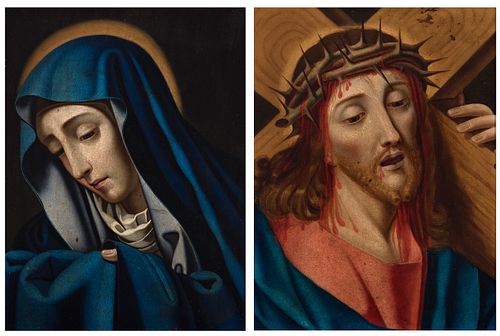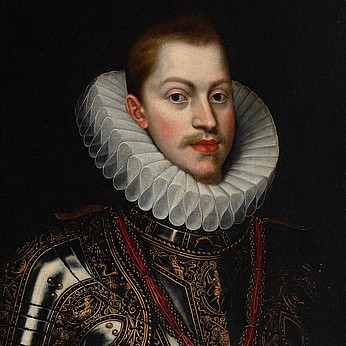Workshop of CARLO DOLCI (Florence, 1616 - 1686). "Christ" and "Dolorosa". Oil on copper.
Lot 79
About Seller
Setdart Auction House
Carrer Aragó 346
Barcelona
Spain
Setdart Subastas was born in 2004 and is currently the first online art auction in Spain with solidity, prestige and reliability guaranteed by our more than 60,000 users. Setdart has a young, dynamic and enterprising team ready to successfully manage the purchase and sale of art works through custom...Read more
Estimate:
EUR€6,000 - EUR€7,000
$6,451.61 - $7,526.88
Absentee vs Live bid
Two ways to bid:
- Leave a max absentee bid and the platform will bid on your behalf up to your maximum bid during the live auction.
- Bid live during the auction and your bids will be submitted real-time to the auctioneer.
Bid Increments
| Price | Bid Increment |
|---|---|
| EUR€0 | EUR€10 |
| EUR€200 | EUR€25 |
| EUR€500 | EUR€50 |
| EUR€1,000 | EUR€100 |
| EUR€3,000 | EUR€200 |
| EUR€5,000 | EUR€500 |
| EUR€10,000 | EUR€1,000 |
| EUR€20,000 | EUR€2,000 |
| EUR€50,000 | EUR€5,000 |
About Auction
By Setdart Auction House
Nov 24, 2021
Set Reminder
2021-11-24 09:00:00
2021-11-24 09:00:00
America/New_York
Bidsquare
Bidsquare : Old Masters, Day 1
https://www.bidsquare.com/auctions/setdart-auction-house/old-masters-day-1-7873
Setdart Auction House sofia@setdart.com
Setdart Auction House sofia@setdart.com
- Lot Description
Workshop of CARLO DOLCI (Florence, 1616 - 1686). "Christ" and "Dolorosa". Oil on copper. Measurements: 23,5 x 18,5 cm (x2); 33,5 x 28 cm (masco, x2). The representation of the advocation of the Dolorosa, added to the figure of Christ carrying the attributes of Calvary such as the crown of thorns and in this particular case the cross, was an iconographic pattern that was widely developed among collectors. This demand led to the conception of the two scenes as an even element, each character represented in a different work, with the intention of satisfying the devotional demand either in a private or public environment. In this case the two images stand out for the pathos of their gestures, a common feature in Carlo Dolci's painting. Due to the formal and stylistic characteristics of the pieces, they can be related to the workshop of the Florentine painter Carlo Dolci, who, according to critics, was the most outstanding Baroque painter in Florence in the 17th century. In addition to the paintings destined to decorate the altars of churches, Dolci popularized compositions with half-length images of the Virgin, Mary Magdalene, saints and other sacred figures, with a polished and detailed technique, which were well received by the late Baroque clientele. Among his first works signed as an independent artist are portraits, a genre that the painter worked on throughout his career and for which he was particularly renowned. He forged his style by copying the works of the great masters of the 15th and 16th centuries, including Fra Angelico, Ghirlandaio, Michelangelo and Correggio. He was also in contact with the Medici collection, which had a great influence on his work of the Dutch painters of his time, such as Willem van der Aelst. Throughout his career and after his death he had numerous disciples, among them Agnese Dolci, his daughter, who followed the family tradition and made numerous copies of Carlos Dolci's paintings.
- Shipping Info
-
In-house shipping available. Please inquire at admin@setdart.com.
-
- Buyer's Premium



 EUR
EUR CAD
CAD AUD
AUD GBP
GBP MXN
MXN HKD
HKD CNY
CNY MYR
MYR SEK
SEK SGD
SGD CHF
CHF THB
THB

















